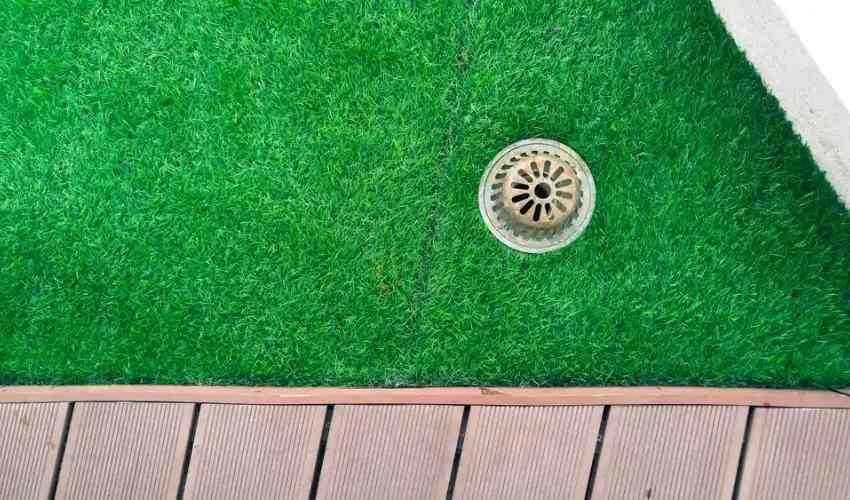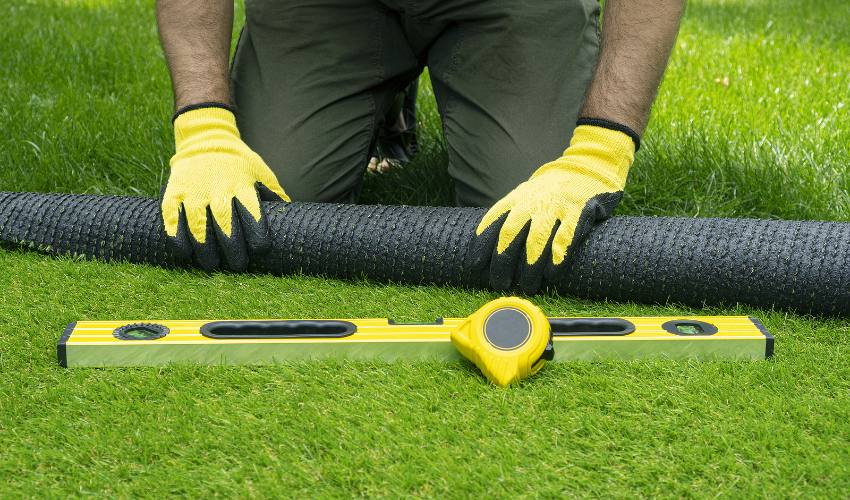Artificial grass is getting hyped in the Dubai market because of its remarkable features such as easy maintenance, durability, and cost-effectiveness. The perfect installation of artificial turf requires technical skills and precise tools. In this article, Green Grass has mentioned an easy step-by-step guide for fake grass installation.
12 Easy Steps To Install Artificial Grass
The use of artificial turf/grass provides you with maximum benefits such as lush green ambiance, water & money savings, hygienic floor surface, and pet and environment-friendliness. We have described the complete installation procedure in 12 easy and simple steps below. By following these simple and effective steps, you can accomplish your DIY artificial turf installation project. In addition, we have drafted a list of essential supplies–you will need to take the initiative in this installation.
Stuff You Will Require For Installation
- Measuring Tape
- Hammer
- Carpet Cutter
- Putty Knife
- Landscaping Rake
- Carpet Stretcher
- Power Broom
- Rototiller
- Plastic Bender Board
- Weed Barrier
Step 1: Area Preparation

The first step in the installation of artificial grass is the preparation of the area. To prepare the area, you should remove the weeds or other vegetative plants by spraying the weed killer. You should spray the weed killer 1-2 weeks before the installation of artificial turf. Doing this before a week can completely kill all the shrubs and weeds by roots.
Step 2: Remove Soil Top Layer
With the killing of all weeds and plants, you can now remove the top layer of soil with the aid of a rototiller. You should dig the soil at least 2-4 inches to make the floor surface suitable for the attachment of soft flooring. While removing the soil, you should also remove the herbs or shrubs plants to make the floor surface plain and smooth.
Step 3: Specify Your Drainage Area

After removing the soil, the next step is to specify the exact area for the drainage of water. As the artificial grass carpet is permeable to water and liquid content, you need to fix a drainage point in any suitable location. Otherwise, in case of rainfall or water spraying, the water will accumulate on the grass layer and take days to dry completely. You should also consider crafting a slope while grading the base material that can lead to water flow towards drainage.
Step 4: Border Installation Around The Grass

The next step is to install a border around the periphery of the floor surface where you want to lay artificial turf. For durable border installation, you can utilize concrete curbs. This border will assist the grass carpet in fixing to the floor surface. After placing the concrete border, attach a plastic bender board around the perimeter.
Step 5: Weed Barrier Layer Placement
If you think weeds or other plants can grow from the soil, you should place a weed barrier over the soil base layer. By placing the weed barrier layer, you can control the growth of any shrub or natural grass. Geotextile is a dense and most popular weed barrier that can be placed. Moreover, to prevent rodent access, you can also attach a layer of rodent barrier.
Step 6: Addition Of Base Layer

The next step is to add a base layer to the place that will hold the artificial turf firmly. The base layer usually comprises multiple materials such as decomposed granite, gravel, crushed rocks, or other materials. Place the mixture of these materials on the floor surface and spread with the help of a shovel. Furthermore, you can also use a landscaping rake for grading the base material.
Step 7: Moisten The Base Material
To moisten the base material, use a garden hose to sprinkle the gravel with water. This practice will moisten the base material. After moistening the base material, the laying surface will automatically become flat. Use a roller to compact the base materials for enhanced firmness with the floor. By moving the roller compactor over the base material forth and back, its thickness will automatically reduce by 0.3-4 inches.
Step 8: Roll Out Grass Turf From The Side

After complete preparation of the grass laying surface, start rolling out grass turf from any side of the floor. If you feel any raised or down area on the floor, you should again compact the floor surface by using a roller until it gets an even surface. In addition, measure the dimensions of your floor and each balcony artificial grass strip with the help of measuring tape. Try to avoid cutting any strip before proper adjustment of all grass strips on the entire lawn surface.
Step 9: Excessive Turf Cutting From Sides

The next step is to cut the excessive areas of grass strips as per requirements. This practice requires technical skills in cutting and adjusting strips. After placing all the strips, you should mark the excessive parts with a bold marker to cut them precisely. While cutting it must be ensured that there will be no gap between the strips’ edges because it gives an unpleasant look.
Check Out Our Fake Grass Services at: https://greengrass.ae/
Step 10: Seam The Grass Turf

Seaming the grass turf is also another technical step to do in artificial green grass installation. Before seaming the grass strips, you should use a stretcher or kicker tool to stretch the edges of the grass carpet to remove wrinkles and gaps. After stretching it will firmly attach to the ground floor and prevent heat expansion. Close the edges of two placed strips and fold them back. Add high-quality seaming material on both edges then again place them on the floor.
Step 11: Infill Addition & Fasten At Ends
The next step is to fasten all the strips to the floor by placing heavy-weight objects on the central edges. For peripheral edges, you should use anchor pins to fix the strips by utilizing the hammer carefully. Try to prevent the wear and tear of any turf portion by severe use of the hammer. After fastening, add the infill material such as silica sand, black crumb rubber, or copper slag to fake turf. These materials will be beneficial in grass blade durability and turf standing.
Step 12: Brush The Artificial Grass

After adding infill materials, the next step you need to do is brush off artificial turf with a power broom. However, you can also utilize the nylon broom to brush the fake turf blades instead of the power broom. Brushing will enhance the shine and aesthetic ambiance of lush green grass. Now, you should spray the water with a garden hose to settle the base and infill materials.
End Note!
It is concluded with remarks that the precise installation of artificial green grass requires practical knowledge. Green Grass has elaborated an entire installation procedure in 12 easy and effective steps. By considering each step keenly, you can perform much better in your DIY project. Furthermore, we have also crafted a list of required materials that you will need to avoid any inconvenience during installation.










